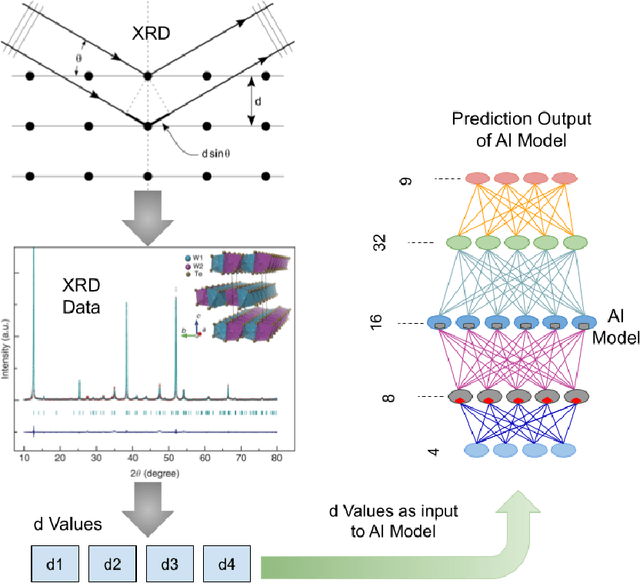Artificial Intelligence Powered Material Search Engine
Paper and Code
Jan 19, 2022


Many data-driven applications in material science have been made possible because of recent breakthroughs in artificial intelligence(AI). The use of AI in material engineering is becoming more viable as the number of material data such as X-Ray diffraction, various spectroscopy, and microscope data grows. In this work, we have reported a material search engine that uses the interatomic space (d value) from X-ray diffraction to provide material information. We have investigated various techniques for predicting prospective material using X-ray diffraction data. We used the Random Forest, Naive Bayes (Gaussian), and Neural Network algorithms to achieve this. These algorithms have an average accuracy of 88.50\%, 100.0\%, and 88.89\%, respectively. Finally, we combined all these techniques into an ensemble approach to make the prediction more generic. This ensemble method has a ~100\% accuracy rate. Furthermore, we are designing a graph neural network (GNN)-based architecture to improve interpretability and accuracy. Thus, we want to solve the computational and time complexity of traditional dictionary-based and metadata-based material search engines and to provide a more generic prediction.
 Add to Chrome
Add to Chrome Add to Firefox
Add to Firefox Add to Edge
Add to Edge